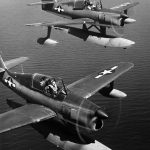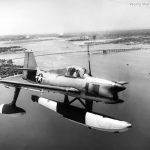Edo XOSE-1
XOSE-1
XOSE-1 2
Edo XOSE-1
Edo XOSE-1
In 1942 the U.S. Navy sent requirements to aircraft manufacturers for the development of a new shipboard catapult aircraft. Its use was planned not only on battleships and cruisers, but also on lighter ships such as destroyers and amphibious assault ships. The machine was intended for reconnaissance and observation, artillery coordination and cooperation with ship radars. The main requirements for the plane were lightness, compactness and ease of storage. Unlike its predecessors, the plane could be single-seat. Weaponry – two machine guns and up to 300 kg of bombs. From the flight characteristics the priority was the range.
Edo decided to take a risk. The design of the all-metal catapult plane by Korvin-Krukovsky was recognized the best at the competition, and the company received support from the Navy to build a prototype. The aviation press of the time joked that this airplane was “hatched from a float,” referring to the company’s reputation. As an engine, the chief designer was forced by the Navy to use a lightweight 600-horsepower V-770-8 Ranger. The twelve-cylinder, twin-row, inverted-V engine was easy to cowl and allowed the plane to be more aerodynamically. Its power was sufficient to achieve the flight speed required by the conditions. The propeller was driven by a Hamilton Standard variable pitch propeller, D6101A-12, which had a diameter of 2.74 m. The fuselage was monocoque.The monocoque fuselage with an oval type cross section was well streamlined, elegant and beautifully shaped. Korvin-Krukovsky used his many years of experience in hydro and aerodynamic studies. The fuselage smoothly flowed from the canopy to the relatively large area tail. The rudders had compensation and were fitted with trimmers. Korvin-Krukovsky was the first in the USA to use a new aluminum alloy 75ХА as the main structural material, thanks to which his plane was half a ton lighter than the designs of competitors, which largely determined the choice of the Navy. The cockpit was closed by a sliding backward tear-drop shaped canopy. The windshield was bulletproof, the back of the seat armored.
The first flight of the XOSE-1 took place on December 28th, 1945. The Curtiss SC Seahawk designed to the same requirements had flown almost two years earlier, on February 16th, 1944. In October of 1944 serial production of 500 Seahawks was begun. It is not clear what caused such a huge delay at the EDO. It is also unclear why the U.S. Navy was tempted to order a small batch of planes from the company. Maybe BuAir liked the light weight of the OSE-1 compared to the Curtiss (takeoff weight 2751 kg against 4082 kg of the SC-1), another advantage of the plane was a 1.5 times longer range – 1448 km, the Seahawk had 1000 km.
A total of eight scouts and aircraft based on it were produced:
S2E-1 – original designation OSE-1.
XOSE-1/OSE-1 – single-seat scout, 8 machines were produced (BuNo 75210-75217).
XOSE-2 is a two-seat version of the scout. Two OSE-1s (BuNo 75214 and 75215) were converted into this modification, and four more OSE-2s were ordered and given serial numbers (BuNo 75625-75628), but they were never produced.
XTE-1 was a two-seat trainer. Two aircraft were converted from OSE-1 (BuNo 75216 and 75217), four more were ordered as TE-2 (BuNo 75216-75217)
The functionality of the two-seat OSE-2 was exactly the same as the OSE-1. To accommodate a second crew member, the fuel tank capacity was somewhat reduced, and a dorsal fin was added to maintain stability. The first flight was in July 1947, in September of the same year 1947 the XTE-1 flew. And in summer 1948 the US Navy made the final choice in favor of helicopters, they were to replace ship scouts on the decks of ships, so the scout program from EDO was finally closed. Officially the EDO planes were never accepted by the Navy.




